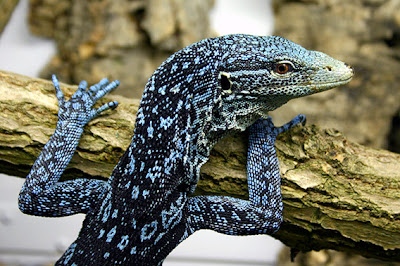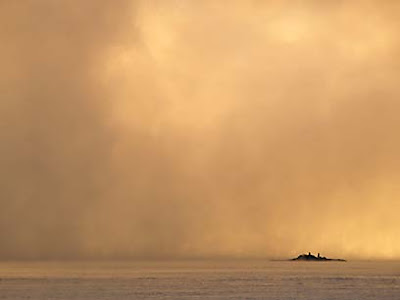Polar hares
While
chatting, the huntsmen, now converted to naturalists, continued on their way,
and reached a sort of vale, without surrounding hills, at the bottom of which
snaked a more or less unfrozen river;
because of its southern exposure there grew some vegetation on the banks
and a certain way up the slopes. The
ground displayed a veritable desire to be fertilized; with a few inches of topsoil, it would have
asked for nothing better than to produce.
The doctor pointed out these manifest tendencies.
‘Look, couldn’t
a few enterprising settlers settle in this valley, if they had to? With hard work and perseverance, they would
transform it; not to a temperate countryside – I wouldn’t go so far – but at
least a presentable patch of land. If I’m
not mistaken, over there are even a few four-legged inhabitants! Such
fellows know all the best places.’
Polar hare
‘Goodness,
they’re polar hares!’ exclaimed Altamont, loading his gun.
‘Wait,’ cried
the doctor, ‘wait, you crazy huntsman!
The poor animals aren’t about to flee.
Come on, leave them be; let them
come to us!’
In fact
three or four young hares, gamboling in the thin heather and new moss, were
approaching the three men, whose presence they did not fear; they ran up with beautiful naïve airs, which
hardly managed to disarm Altamont.
Arctic fox
Soon they
were between the doctor’s legs, who stroked them, saying:
‘Why use
shots for those who seek caresses? The
death of these small creatures wouldn’t serve us.’
‘You’re
right,’ cried Hatteras, ‘their lives should be spared.’
‘Like those
of the ptarmigans flying toward us,’ exclaimed Altamont, ‘and the sandpipers
advancing gravely on their long stilts.’
Arctic Ptarmigan
A whole
feathered race was approaching the huntsmen, not suspecting the danger the
doctor had averted. Even Duke, holding
himself back, watched in admiration.
Arctic sandpiper
It was a
curious sight to see the pretty animals running, jumping and leaping
trustingly; they landed on the good
Clawbonny’s shoulders; they lay down at his feet; they spontaneously offered themselves to the
unaccustomed caresses; they did their
utmost to welcome the unknown guests;
the many birds, joyously chirping, called to each other and came from
all points of the valley; the doctor
resembled a veritable charmer. The
huntsmen continued their journey by climbing up the soggy banks of the stream,
followed by this friendly group; at a
bend in the valley they spotted a herd of eight or ten reindeer, grazing on
some lichen half-buried under the snow, charming animals to look upon, gracious
and calm, the females bearing antlers as proudly as the males. Their wooly hides were already exchanging
wintry whiteness for the brown and dull grey of summer; they appeared no more frightened and no less
tame than the hares or birds of this peaceful country.
Such
must have been the relationship between
the first man and the first animals when the world was young.
Dr. Clawbonny, Duke, Captains Hatteras and Altamont in Northern Arcadia
Text excerpted from: Jules Verne, The Adventures of Captain Hatteras (1864). Trans. William Butcher. Oxford, Oxford University Press, 2005.





















































